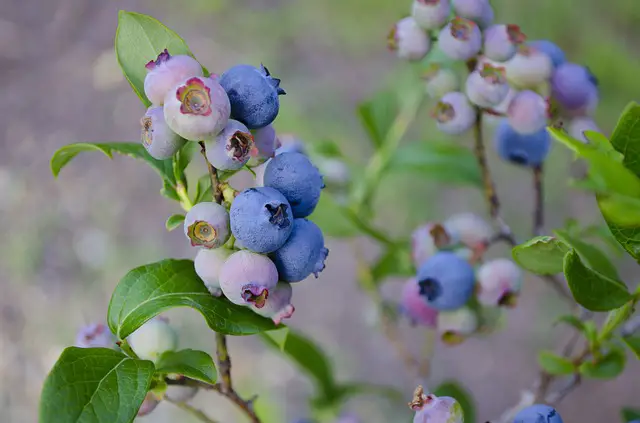Bonsai is recreating trees that are found in nature in miniature. It is an art of illusion, to make a small tree look similar to its bigger versions. Also to make relatively young trees look old and ancient. The art of bonsai is loved by many and is a name that everyone is familiar with.
Blueberry Bonsai
Many trees can be turned into bonsai but bonsai trees that bear fruit are not many. The blueberry bonsai is a tree that the community tries to make bonsai out of. Although it is a bush type of tree, it takes years to bear fruits and does better in open soil than in a pot. So, to make a bonsai out of it is particularly a tough process.
There are many types of blueberries. Some are dwarfs that do not bear many fruits, also there are some that are big and famous for their high yield. The trick is to choose a tree that is hardy in nature and fruit-bearing comes later. The first thing to ensure is the survivability of the bonsai.
A particular blueberry that is suitable for the bonsai transformation is the ‘Top Hat’ blueberry. It is a cross between Highbush and Lowbush blueberry. The trees are found south of Alabama, in eastern North America, in Nova Scotia, and in Ontario. The berries that trees yield are sky-blue, highly delicious.
Moreover, the deciduous nature, slow growth rate, and thick trunk make it perfect for bonsai. It is heat tolerant and can survive heats where other blueberry trees might not survive.
Prepare the Soil
The top hat blueberry is perfect for an edible bonsai. The first step to planting a blueberry is giving it soil with a perfect pH level. Blueberries need soil that has a pH range from 4.0 to 5.5. If the pH level is too high the leaves will become discolored, they will fall out and most importantly the tree will die eventually.
To decrease the pH range the most common component is Sulfur. Another way is to use Sphagnum Peat moss, adding them to the soil will decrease the Ph level slowly.
The pH level being lower is also dangerous for a blueberry plant. Use acidic fertilizers to increase pH. The pH level needs to be safe to go ahead with the project. So, always check your pH level if your tree shows abnormality.
Normally blueberry plants take 10 years to bear fruit but it is not the same when it comes to bonsai. A blueberry bonsai can show fruits after 3 years. In 3 to 5 years the yield will be small but after that, it will bear a decent amount of fruit.
Nurturing Your Bonsai
The plants normally live 25 to 30 years. The time can vary for bonsai because they usually live more. It happens because of nurture and monitoring. A blueberry bonsai will live till 50 years if the environment is suitable to its needs.
Placing your bonsai
The trees should be kept outside all year long, except in winter. In winter they are in their dormant phase. Putting them in your garage shed is a good choice. For summer, fall, spring the tree should be kept outside. Blueberry trees in general need morning sun and afternoon shed. So placing them in a suitable environment is very important.

Watering
Water is essential for blueberry bushes, and the soil should never be fully dry. That does not, however, imply that the pot should be filled with water. Overwatering is also bad, so make sure your blueberry bonsai has the right amount of humidity.
Checking for dampness with your fingers is a smart technique to do that. Lifting up the pot is another approach to check humidity; if the pot is very light, the soil is dry and needs water. The blueberry bonsai may require watering once or twice a day, depending on the conditions. It’s crucial to keep an eye on the soil to see what works best.
Grow Ficus Benjamina Bonsai in 7 Easy Steps
Trimming
The trimming is an important part of a bonsai. The branches, stems, and leaves should be trimmed occasionally. Always pinch out new shoots and stems to control the growth rate. The dead leaves and branches should be dealt with frequently to make sure the bonsai looks clean. Keep 5-6 stems and cut the others to make sure it does not overgrown. Evaluate your tree’s growth and decide on a trimming routine.
Repotting
A bonsai needs to be repotted every two or three years. It is done because the roots take over the whole pot. The trees are repotted and the roots are trimmed to make them fit in the pot again. The repotting is done when the trees are strong and can survive the changes. For blueberries, the mid-summer is a good time to re-pot. It is an essential part of bonsai and should be done if you want your bonsai to survive for years.
Fertilizing
Bonsai trees also need fertilizers. The fertilizers that are used for normal trees work well for them but use half the amount than the recommended portion. The pots are small so fertilizers that are needed are also less in quantity. Organic fertilizers are also a good alternative for your bonsai tree. The fertilizer should be used every month once, except in winter.
Training
The training of bonsai trees is done by expert bonsai enthusiasts. The styling is done according to personal taste and the techniques that are used normally are wiring, carving, etc. If you are not aware of the techniques or tricks it is recommended to not do training. Worst case scenario you might damage your tree. So take the help of an expert or have them do the training.
Closure
The world of bonsai is filled with beautiful specimens. The fruit-bearing bonsai is exceptionally charming. The blueberry bonsai can be another example of that. Although it is an ambiguous project, if it is done right it will make you proud. So, if you are thinking of a blueberry bonsai, do not be scared and start working on the project.

Hi, I am Rahat Rubayet. I am an entrepreneur and A gardener by Hobby. I created This website to help people like you, who want to make the world greener and want to leave it as a better place for our next generation.



